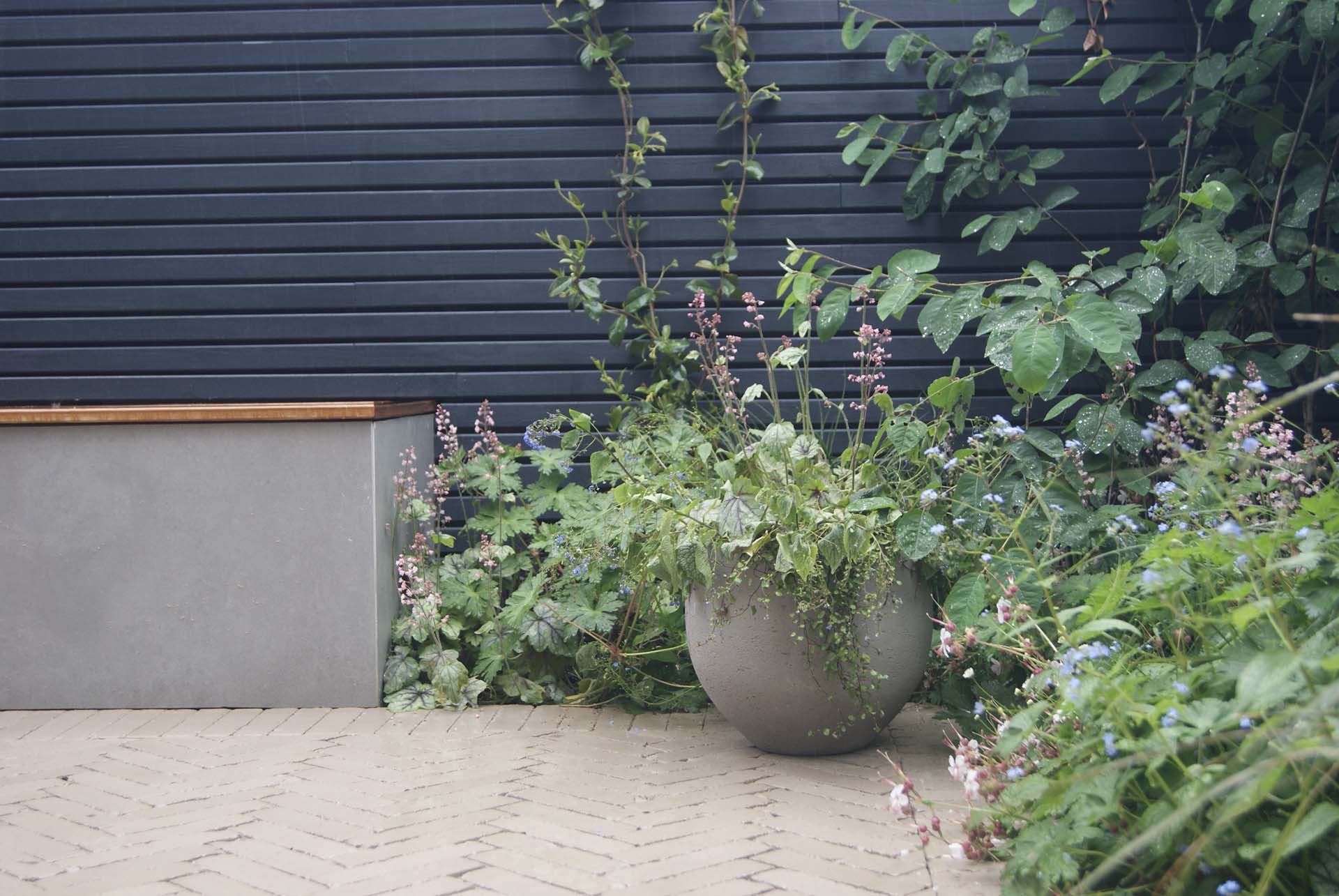How to paint a fence the right way
Is your garden fence looking a bit scruffy? We tell you how to paint your fence in 10 easy steps and the best time of year to do it.

Is your garden fence looking a bit scruffy? We tell you how to paint your fence in 10 easy steps and the best time of year to do it.

Is your garden fence looking a bit scruffy and tired? Painting your fence panels is a great way to spruce them up while protecting them with a lick of paint or preservative.
We've teamed up with Caroline Thornborough, the director of specialist eco wood paint manufacturer Thorndown who explains the right way to paint your fence in 10 easy steps.
Before starting any DIY job we’d always advise you to get everything ready before you start. There’s nothing more frustrating than setting time aside to complete a task, to discover you haven’t got a vital piece of equipment.
To make the task of painting your fence as easy as possible, Thornborough recommends planning around your plants’ growing seasons: “If you have climbers, plan to paint when the flowering season is over and when you need to cut the plants back,” she says.
Waiting until your plants have died back will leave you with a clearer space to reach the fence, avoiding the problem of potentially trampling on and damaging your plants. There’s also nothing worse than painting a fence in the heat of summer. It’s a job best left to the dry, cool months.
Check to see what temperature the paint you’ve chosen can be used at. For instance, Thorndown’s range can be used at as low as 0 degrees C.
Before you dive in with your paintbrush, clear the surrounding area. This will give you the space to work and avoid any paint going where it’s not intended – it’s time well spent, especially if you’re planning on using a spray gun.
And if you’re painting your fence before your plants have died back, ensure you carefully remove any climbers, and tie back plants that will get in the way.
Move any garden seating and furniture, and cover patio and decking areas with plastic sheets to protect them from paint splashes.
Check over your fencing and make any necessary repairs.
“With rough sawn panels it can be common for them to become a bit loose, especially if they’ve got battered by the wind,” says Thornborough, “so bang the nails back in to place.”
“Use a stiff cleaning brush and soapy water to clean off dirt and algae from the fence,” says Thornborough. But if that won’t do the job, she recommends removing tough stubborn patches of algae with a mild bleach solution.
A power washer can also do the trick, but she warns: “It will saturate the wood, so you’d need to factor in one-two days drying time depending on how hot and strong the sun is.”
However, if your fence is not particularly robust you might prefer to clean it by hand, as a power washer may cause some damage.
Mix 10ml (a third of a fluid ounce) of bleach with one litre (34 fl oz) of water for a solution suitable for cleaning a fence. Fencing by its very nature is on the rough side, but you may need to tidy it up in places, once you’ve cleaned it down..
“You will only need to sand areas that you may come into direct contact with to avoid splinters, but otherwise don’t bother, especially with rough sawn wood, as you could be there for days!” advises Thornborough.
Concrete posts will look unsightly if covered in drips of paint. Thornborough suggests either protecting them with masking tape and newspaper or by covering with a temporary fence protector.
Thornborough tells us that it’s not normally necessary to apply a primer to a fence unless you are applying a white paint or light shade, in which case it can be applied to disguise any tannin stains or knot bleeds.

Thornborough has shared her top tips on painting a fence.
If using a step ladder to reach up to paint a high fence, make sure it’s correctly set up on a level surface and ask someone to hold the ladder for you.
“Drying time depends on the paint and weather, so always check the tin for advice,” says Thornborough.
As a guide, you can expect the paint to dry within an hour, so if you’re painting a whole host of panels, you can probably get started just as soon as you’ve finished the first coat.

It’s well worth spending the time keeping your tools in good shape to extend their longevity. If using water-based paint, Thornborough advises cleaning your brushes with water, adding: “For stubborn paint on bristles you can use a spot of detergent too.”
Oil-based paints need a different approach and will only come clean with a chemical, such as white spirit.
Once you’ve finished painting your fences and you’ve got some paint left over, it’s advisable to seal it properly and store it at the right temperature.This will allow you to reuse the paint at a later date, saving it from spoiling or drying out.
“Seal your paint tin lid firmly and store paint somewhere that it won’t freeze or be exposed to extreme heat,” says Thornborough.
“If you clean paint off the outer rim of the lid it will seal better, and you won’t get paint sticking and sealing it shut. The paint will then last a couple of years, or more, for maintenance and touch-ups.”










